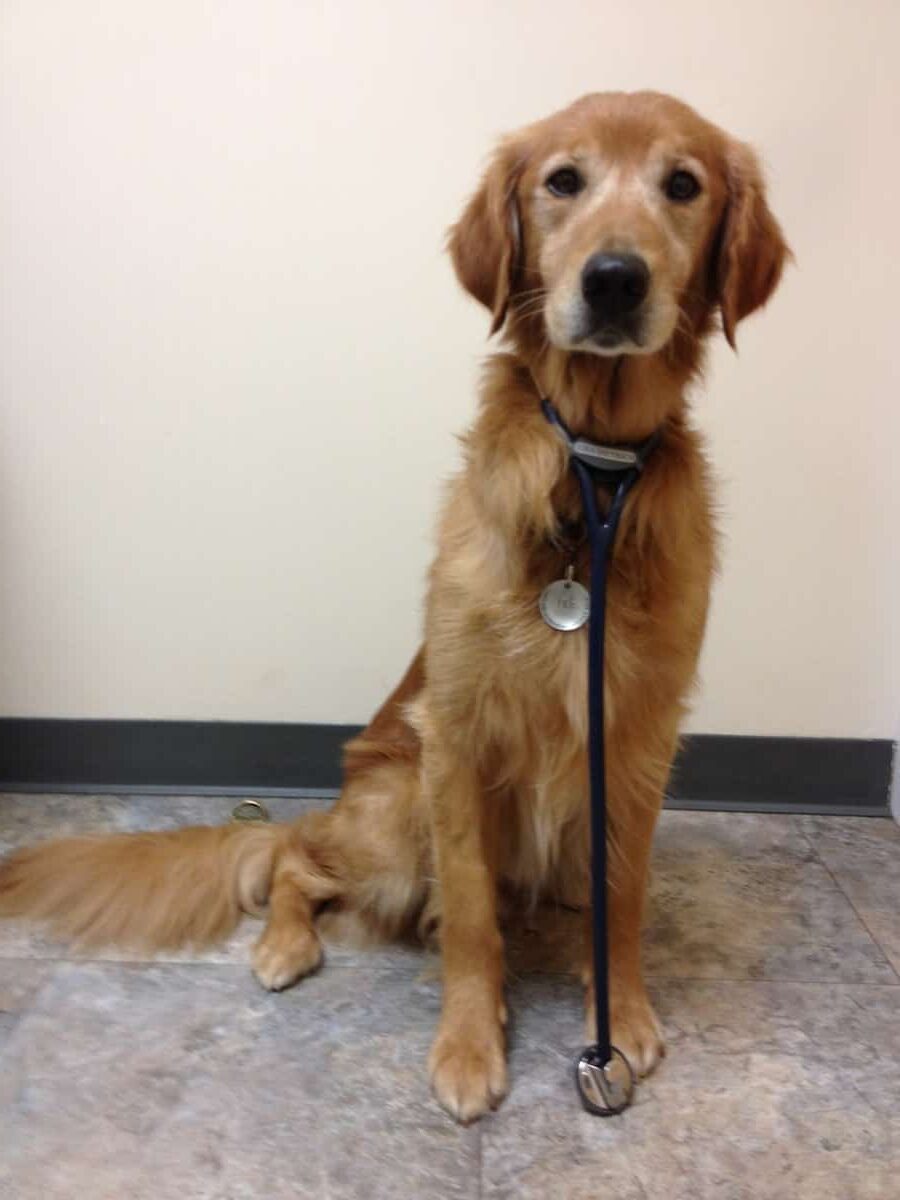That’s Dr. Ike up there in the picture! We adopted him when he was 9 years old, and snapped this picture one day when we were in the veterinarian’s office and the vet left her stethoscope behind! Cancer took him from us several years ago, but this photo remains one of my favorites. We adopt senior dogs, so we find ourselves at the veterinarian’s office frequently with their various age-related issues. Even our younger dog, Pete, visits the vet’s often enough for routine care, sick visits or injury. Every time I look over the bill, I ask myself the same question: Would pet insurance be a good idea? But because I don’t know enough about it, I never end up taking any action.
So I was glad to see this information from Lendedu come across my desk. The chart compares several pet insurance companies and reviews features and rates. It really helped me to better understand the features offered, and the pros and cons of various plans. If you have questions about pet insurance too, take a look and see if one of these insurance companies might be a good fit for you.
Compare Pet Insurance Companies
Find a Pet Insurance Policy

Our top-rated pet insurance provider
- #1 Recommended by Cesar Millan
- No age cap on coverage, older dogs and cats welcome
- Coverage for accidents, illnesses, hereditary and congenital conditions
- Up to 90% reimbursement

- Extensive accidents and illness coverage with vet bills reimbursed at 90%
- An option to add Preventative Care that reimburses at 100%

- Technology that allows the hospital to be paid directly
- The same policy for all pets with no payout limits – ever*
Read the complete article for full coverage details for each plan.
The chart was written by Jeff Gitlin from Lendedu and reposted with permission.
How Pet Insurance Works
The article explains that pet insurance is structured like property insurance, rather than typical health insurance. Most pet insurances include a monthly premium, deductible, and co-pay. The most important factor to consider when comparing pet insurances is what services are covered.
Some plans only cover accidents and illnesses with no coverage for wellness visits, while other pet insurance plans just cover wellness visits. However, the best pet insurance plans are comprehensive and include emergency care, illnesses, and wellness visits.
Insurers often limit coverage for pre-existing conditions. This is done primarily to prevent pet owners from buying insurance on pets with known chronic conditions.
With most pet insurance policies, there is a waiting period of up to 14 days after the policy is purchased during which no claims can be submitted for sickness. Some medical conditions may require up to a one-year waiting period, while the waiting period on injuries is generally 24 to 48 hours.
Pet insurance may range from about $20 up to $100 a month depending on the breed and age of your pet.
The article explains:
- Age: With some policies, premiums increase as your pet ages. Where the premium for a 1-year old mixed-breed dog might be $300 in the first year, it could increase to as much as $500 a year by the time the dog turns 10, when it is more likely to need care. Learn more about senior pet insurance here.
- Type of Pet: Premiums are higher for dogs than cats. Purebred pets are charged higher premiums because of the higher risk of hereditary conditions. Policies for pets and breeds that are known to have chronic conditions may also be more expensive.
- Deductible: The higher the deductible, the lower the premium. Deductibles range from $100 to as high as $2,500. The standard deductible for most policies is $250.
- Coverage Limit: Policies with higher coverage limits have higher premiums.
- Reimbursement Percentage: The standard reimbursement percentage for pet insurance policies is 80%. Policies that reimburse at a higher rate tend to charge higher premiums.
- Zip Code: If you live in a metropolitan area such as NYC, veterinary rates tend to be higher, so premiums for pet insurance are higher.
The question is, will buying pet insurance save you money? Or will you pay more for premiums and deductibles, that exceed the cost of medical care? That’s the question that is hard to answer in advance! We still haven’t decided for ourselves. Alternatively, some people create a bank account where they put a certain amount of money each month, so that they will have it in case their pet has a large medical expense. So would pet insurance have saved us money when Ike developed cancer? Would it make sense for 12 year old Ernest now….or would it be wise for 3 year old Petey? I continue to research.
Do you have pet insurance? What do you like/not like about it? What tips do you have for us?






